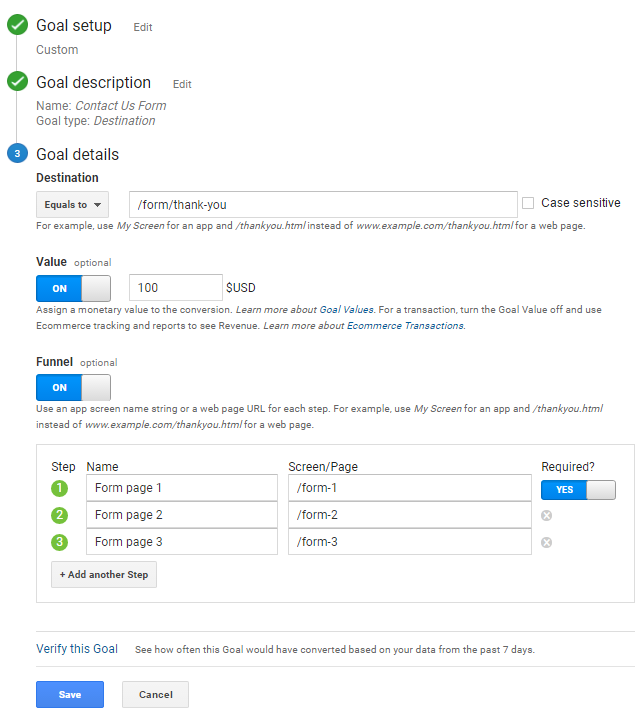Discover the Limitations of Google Analytics Goals: Introducing the Data Kind That Remain Untrackable
As organizations progressively rely upon data-driven decision-making, recognizing the limitations of tools like Google Analytics becomes vital. While Google Analytics Goals deal beneficial insights into customer interactions, there exist information kinds that avoid tracking, presenting challenges to a detailed understanding of customer actions. These untrackable data types increase inquiries about the precision and completeness of the analytics information that companies greatly trust for their electronic methods. Curious to reveal the hidden dead spots in your data analysis process?
Incomplete Customer Trip Tracking
Incomplete individual journey tracking within Google Analytics can hinder the capability to precisely assess customer habits. When the user journey is not fully tracked, there are spaces in the information that stop a thorough understanding of just how customers interact with a web site. This absence of understanding can bring about missed chances for optimization and enhancements to the user experience.
One common problem with insufficient customer trip tracking is the inability to see the full path that individuals take before completing an objective or leaving the website. Without this information, it is challenging to recognize where individuals may be coming across challenges or rubbing factors that avoid them from transforming. Furthermore, incomplete tracking can obscure the effect of specific marketing initiatives or web site adjustments on user actions.
To resolve this constraint, it is critical to establish up appropriate monitoring systems within Google Analytics to record the whole user journey. This might involve establishing event tracking, goal funnels, or utilizing devices like Google Tag Manager to make certain that no crucial interactions go unrecorded. By obtaining a comprehensive sight of the customer journey, web site owners can make more enlightened decisions to enhance user engagement and drive conversions.
Acknowledgment Obstacles
Browsing with acknowledgment difficulties in Google Analytics calls for an extensive understanding of how different touchpoints contribute to the general conversion procedure. Acknowledgment obstacles emerge from the intricacy of modern-day consumer journeys, where individuals communicate with multiple networks before converting.
One common acknowledgment challenge is the problem in attributing conversions to the appropriate source, particularly in cases where users interact with multiple channels prior to transforming. Furthermore, cross-device monitoring postures another attribution difficulty, as users usually change in between devices during their trip, making it testing to track their communications seamlessly.
Offline Conversions
Offered the challenges related to connecting conversions accurately in online networks, the measurement of offline conversions provides a significant chance for online marketers seeking a more extensive understanding of their customers' trip. Offline conversions describe actions that customers absorb the physical globe, such as making acquisitions in brick-and-mortar stores or over the phone, participating in occasions, or involving with published materials - what data is google analytics goals unable to track. These conversions are crucial for businesses that run both online and offline, as they offer useful insights right into the effectiveness of advertising projects across different touchpoints
Tracking offline conversions traditionally postured a substantial obstacle for marketing experts, as it was challenging to attach these actions back to certain online communications precisely. With advancements in innovation, such as the assimilation of CRM systems, distinct identifiers, and coupon codes, organizations can now bridge the void in between online and offline information to acquire a much more all natural view of customer behavior. By efficiently gauging offline conversions, marketers can maximize their techniques, allot sources much more effectively, and ultimately enhance the total client experience.
Cross-Device Monitoring
Cross-device monitoring plays a crucial role in understanding the interconnected nature of customers' digital communications across several devices. In today's omnichannel world, where individuals flawlessly switch over between tablet computers, smart devices, and desktop computers, helpful hints tracking their actions throughout these devices is vital for marketers to obtain an extensive sight of their client trip.

Furthermore, personal privacy worries and guidelines such as GDPR and CCPA have even more difficult cross-device tracking. With users requiring more control over their data and enhanced constraints on monitoring innovations, marketing experts have to discover privacy-compliant and cutting-edge means to link user communications across gadgets.
Dynamic Content Interaction
Understanding customer engagement with dynamic web content is critical in optimizing electronic advertising methods for enhanced target market communication. Dynamic web content describes internet site components that alter based on customer habits, preferences, or other elements, supplying a customized experience. However, tracking customer interactions with dynamic material here postures challenges for traditional analytics tools like Google Analytics.
While Google Analytics can track basic interactions like clicks and web page sights, it might battle to capture even more nuanced interactions within vibrant web content. what data is google analytics goals unable to track. Metrics such as time invested on specific dynamic aspects, float activities, or communications within pop-ups are often not conveniently quantifiable utilizing conventional monitoring techniques. This limitation prevents online marketers' capability to completely comprehend exactly how customers are engaging with vibrant material and customize their approaches appropriately
Verdict
Finally, Google Analytics goals have constraints in tracking insufficient individual trips, connecting conversions accurately, catching offline conversions, tracking cross-device communications, and gauging dynamic material engagement. These constraints highlight the importance of checking out additional monitoring techniques and tools to obtain an extra thorough understanding of individual behavior and conversions past what Google Analytics can provide.
While Google Analytics Goals offer important insights into user communications, there exist information types that avoid tracking, presenting difficulties to an extensive understanding of user behavior.Incomplete user trip tracking within Google Analytics can prevent the capacity to precisely assess customer actions. When the customer journey is not fully tracked, there are voids in the data that avoid a detailed understanding of just how individuals connect with a website.One common problem with insufficient customer trip monitoring is the inability to see the complete course that individuals take before finishing a goal or leaving the website. By gaining a comprehensive view of the individual journey, internet site proprietors can make more informed choices to improve customer interaction visit this website and drive conversions.